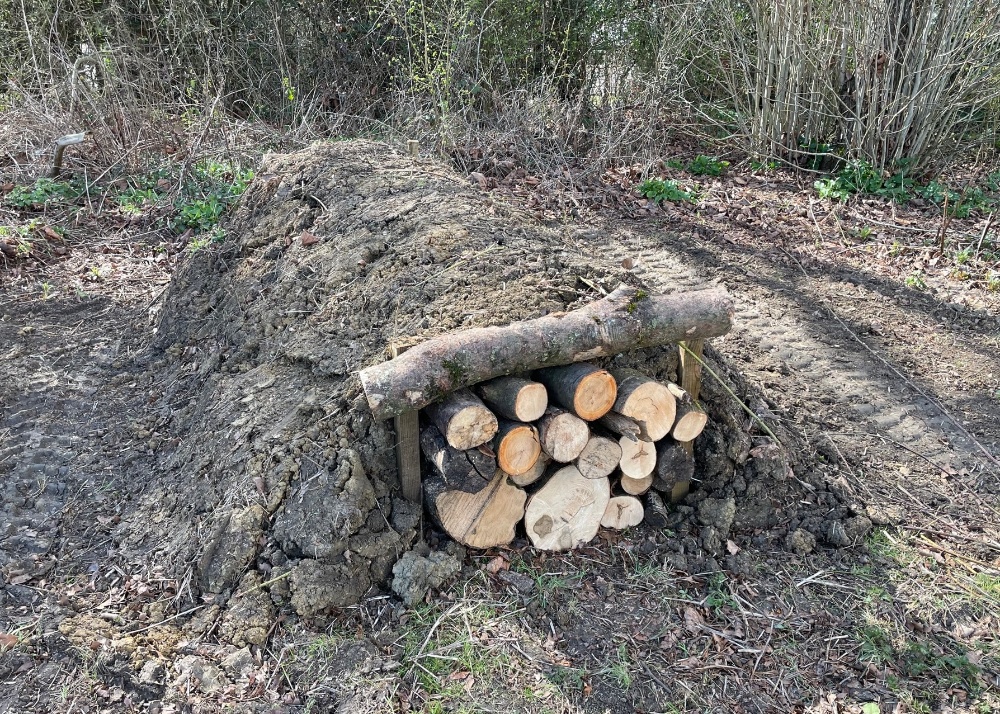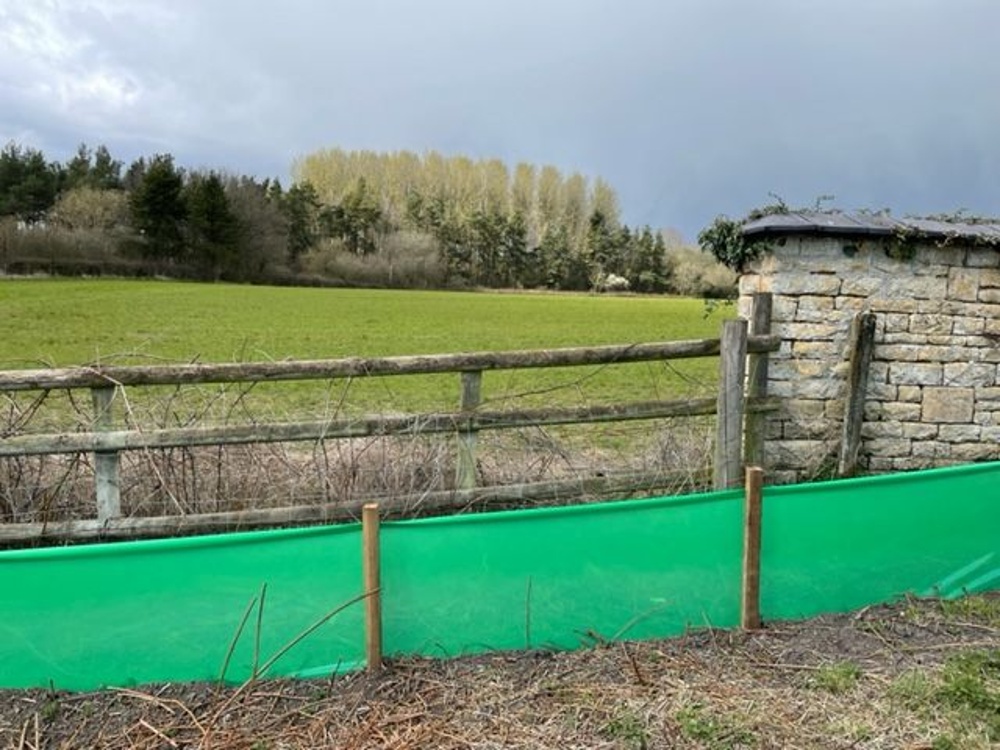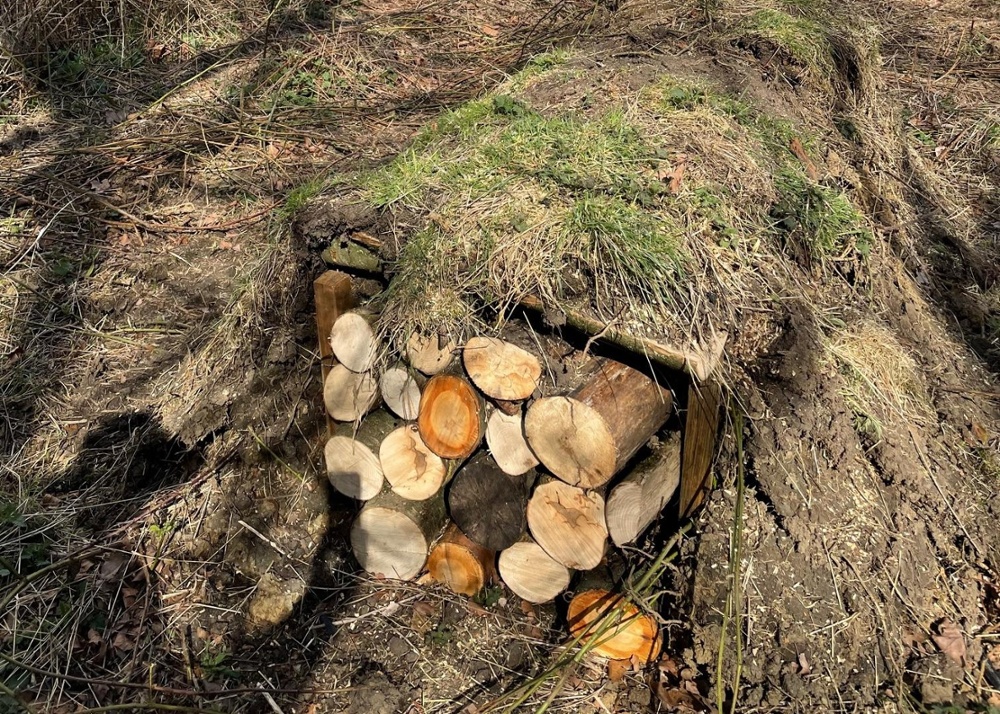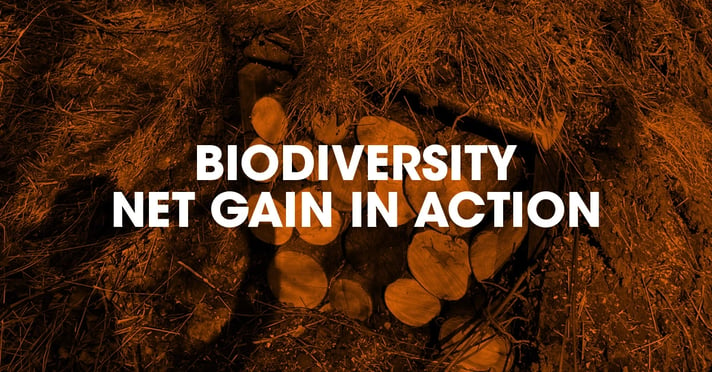Net gain in action with Castlethorpe Homes
To get the inside track on what developers are already doing to contribute to biodiversity, we caught up with Castlethorpe Homes, based in Oxfordshire.
Their recent development in The Cotswolds caught our eye when we saw that they were incorporating hibernaculums on their sites to improve local biodiversity.
Chris Warner, managing director at Castlethorpe Homes, spoke to us about their work on this front.
How long has Castlethorpe Homes been incorporating biodiversity projects into your developments?
“We have always been working on biodiversity, but with it moving up the public agenda, it is becoming increasingly important to have as part of a development.
“More and more developments will have requirements going forward, and we embrace that in order to enhance the natural part of our new developments.
“It is about having some positive legacy for each site.”

Can you briefly describe the process of designing and building your hibernaculum projects?
“There is a robust requirement for building a new hibernaculum. On our recent site, we had to create a number of habitats for newts, slow worms and snakes which involves creating different layers for them to be safe and comfortable.
“This may involve logs/bricks on the base (with gaps) and entrance and exit pipes, covered in soil and then covered in turf and meadow seed. The key is to have the locations right with sunny spots and areas to bask and good access.”
What are the most important factors to consider when developing successful net-gain projects?
“Each project is different and needs looking at holistically, including where the site is located and what is needed.
“Sometimes it is hedges to plant, ponds to create, wild meadows to protect, and other times it involves tree planting, and small but important items like bee bricks, bat tiles, or hedgehog highways.
“Each site has its own needs, and we try to add the simple things into every development wherever we can. If you are laying bricks, why not have bee bricks, even if it is not a requirement?”

What kind of benefits do local wildlife enjoy?
“They enjoy a safe shelter, and a place to thrive. They have a designated place to rest, feed, and have a long-term future.
“Having designated areas allows in some areas for safe relocations of wildlife from developed sites into a new meadow, and new home, without any destruction. The hibernaculums also attract insects and other animals that contribute to the food chain cycle around the locations.”
How do you see the benefits of your biodiversity gains?
“We need to look back first in order to see the benefits going forwards. In years gone by, nothing like this was done and the losses were huge (and have been well-documented). Now, the benefit is to have more harmony with growth and development while ensuring wildlife is considered as part of proposals.
“The long-term benefits will be seeing wildlife return to areas and grow, and we are already seeing customers asking about biodiversity and wanting it included in the early decision-making process.”

What makes biodiversity so important to Castlethorpe Homes?
“Any responsible and forward-thinking company has to look at the wider picture and embrace the need for change.
“The future, climate change, and sustainability are key on our agenda and we feel this can be linked with quality house building rather than the two things being separate.”
“As a nation we need to look at solutions to address the housing crisis and the low number of new homes being built each year, but we also need to do this in a way that evolves our beautiful green spaces, and populates these green spaces with wildlife and not just have green spaces of grass and nothing else.”
Can you describe any other bio-diversity or ecology-focused initiatives that you’re working on?
“We have another development where we are planting 1100% more native hedgerows than currently on site and also creating a 12m wildlife buffer on the edge of the development.
“On another site, in a more urban location, we are incorporating green roofs to attract more wildlife to an area with smaller gardens and less outdoor space.
“We intend to continue to embrace the need to link wildlife and nature to our developments where possible.”
How do the owners of your homes feel about the bio-diversity and hibernaculum projects near them?
“I think customers are genuinely interested (especially children), and on a conscious level they are pleased.
“I’m sure it is not their only reason for buying a house, but it is a nice by-product to feel that their new home has helped created a new wild life environment or home.
“People love seeing bees in the garden, butterflies on the flowers and hedgehogs in the hedges – if Castlethorpe Homes did not do these things then people would only see them in wild, rural locations.”
Looking for more information?
Katie Mulkowsky, writing for Urbanist Architecture, has produced a robust and thoughtful breakdown of what BNG means for planning and building, and how developers might prepare for the upcoming legislation changes. You can read that article here.
If you have any questions about your project’s warranty, or how any planned BNG projects might interact with any property covered by a warranty, you’re always welcome to contact your LABC Warranty account manager.
If you’d like to know more about Castlethorpe Homes, you can visit their website here - https://www.castlethorpehomes.co.uk/


Have your say